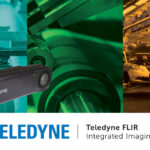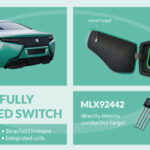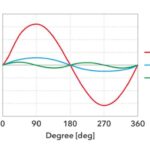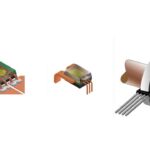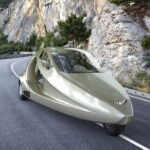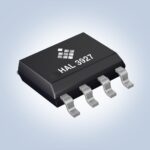Teledyne FLIR IIS announced the Bumblebee X series – an advanced stereo vision solution built on our best-in-class stereo vision portfolio. Their legacy of stereo vision solutions started over 25 years ago with Point Grey Research’s Triclops and Digiclops. Now, they have actualized a new industrial stereo camera Bumblebee X, and a software Spinnaker 3D […]
Automotive
Position-sensing switch for enhanced automotive safety
Melexis has introduced the MLX92442 Induxis switch, which offers a contactless and magnet-free monolithic design to directly detect conductive targets, facilitating small module designs with reduced component count for various applications such as high voltage interlocks, charging flaps, seatbelts, hood/trunk, gear tooth sensing, or brake-by-wire systems. Traditional safety automotive latches and switches typically rely on […]
How current sensing impacts electric vehicles: part 2
Part 1 of this blog addressed current shunts and Hall-effect sensor designs. This part discusses current transformers and new technology options such as magnetoresistance and even diamond quantum sensors. One of the major issues in today’s electric vehicles (EVs) is the ongoing evolution of technology with the standards evolving as well. In the 100+ years […]
How current sensing impacts electric vehicles: part 1
The need to transition from gasoline and diesel (fossil fuels) powered vehicles to electric vehicles (EVs) to reduce carbon dioxide levels has revealed many controversial issues. Common issues include implementation timing, required infrastructure (including fast charging multi-vehicle systems), legislated rather than consumer-based adoption, ongoing system enhancements, and sources of new critical raw materials. One of […]
3MP SoC image sensor for LED flicker-free, high dynamic range automotive cameras
OMNIVISION debuted the first OX03J10 3-megapixel (MP) CMOS system-on-chip (SoC) image sensor with 140dB high dynamic range (HDR) and LED flicker mitigation (LFM) for superior image quality regardless of lighting condition. The OX03J10 SoC is ideal for surround-view systems (SVS), rear-view cameras (RVC), and camera-monitoring systems (CMS). By integrating the image sensor with a dedicated image signal processor (ISP) […]
mmWave radar sensor chip and diagnostics-integrated driver chips address functional safety
Texas Instruments has introduced new semiconductors designed to improve automotive safety and intelligence. The AWR2544 77GHz millimeter-wave radar sensor chip is the industry’s first for satellite radar architectures, enabling higher levels of autonomy by improving sensor fusion and decision-making in ADAS. TI’s new software-programmable driver chips, the DRV3946-Q1 integrated contactor driver and DRV3901-Q1 integrated squib […]
Jointly developed reference design address depth-aware, in-cabin sensing data design challenges
Eyeris Technologies, Inc. announced their partnership on a production reference design to improve safety and comfort in the entire automobile cabin. This jointly developed reference design integrates Eyeris’ advanced monocular three-dimensional (3D) sensing AI software algorithm into Leopard Imaging’s 5-megapixel (MP) backside illuminated (BSI) global shutter (GS) camera, which uses OMNIVISION’s OX05B image sensor and […]
Position sensors are ASIL C-ready
TDK Corporation further extends its Micronas 3D HAL position sensor family with new HAL 3930-4100 and HAR 3930-4100 for automotive and industrial applications. Both sensors empower precise position detection with robust stray-field compensation capabilities, offering flexible digital output interfaces in the form of PWM or SENT. The single die devices are defined as SEooC (Safety […]
What role does sensing play in a flying car?
Will your first or perhaps your next sports car be capable of flying? If you are looking for the cool factor, the Samson Sky Switchblade Flying Car is certainly worth checking out. Completing its first flight on Nov. 9, 2023, after 14 years of design and rigorous testing, the flight test data will enable the […]
Magnetic-field position sensor measures in three axes
TDK Corporation announces the portfolio expansion of its Micronas direct-angle Hall-effect sensor family with the new HAL 3927* sensor for automotive and industrial applications. HAL 3927 features a linear, ratiometric analog output with integrated wire-break detection as well as an SAE J2716 compliant SENT interface according to rev. 4. Samples are already available. The start of production […]

